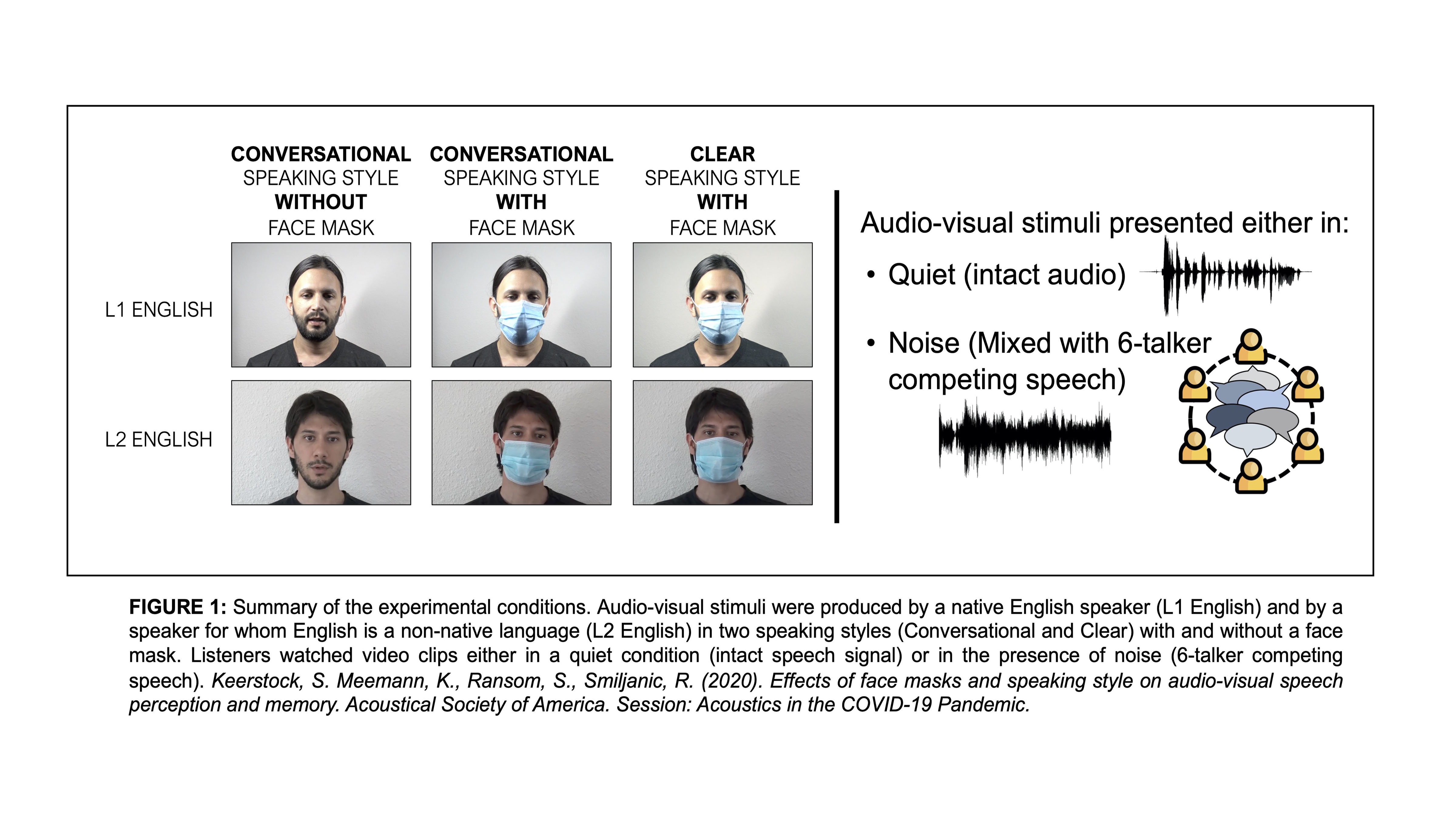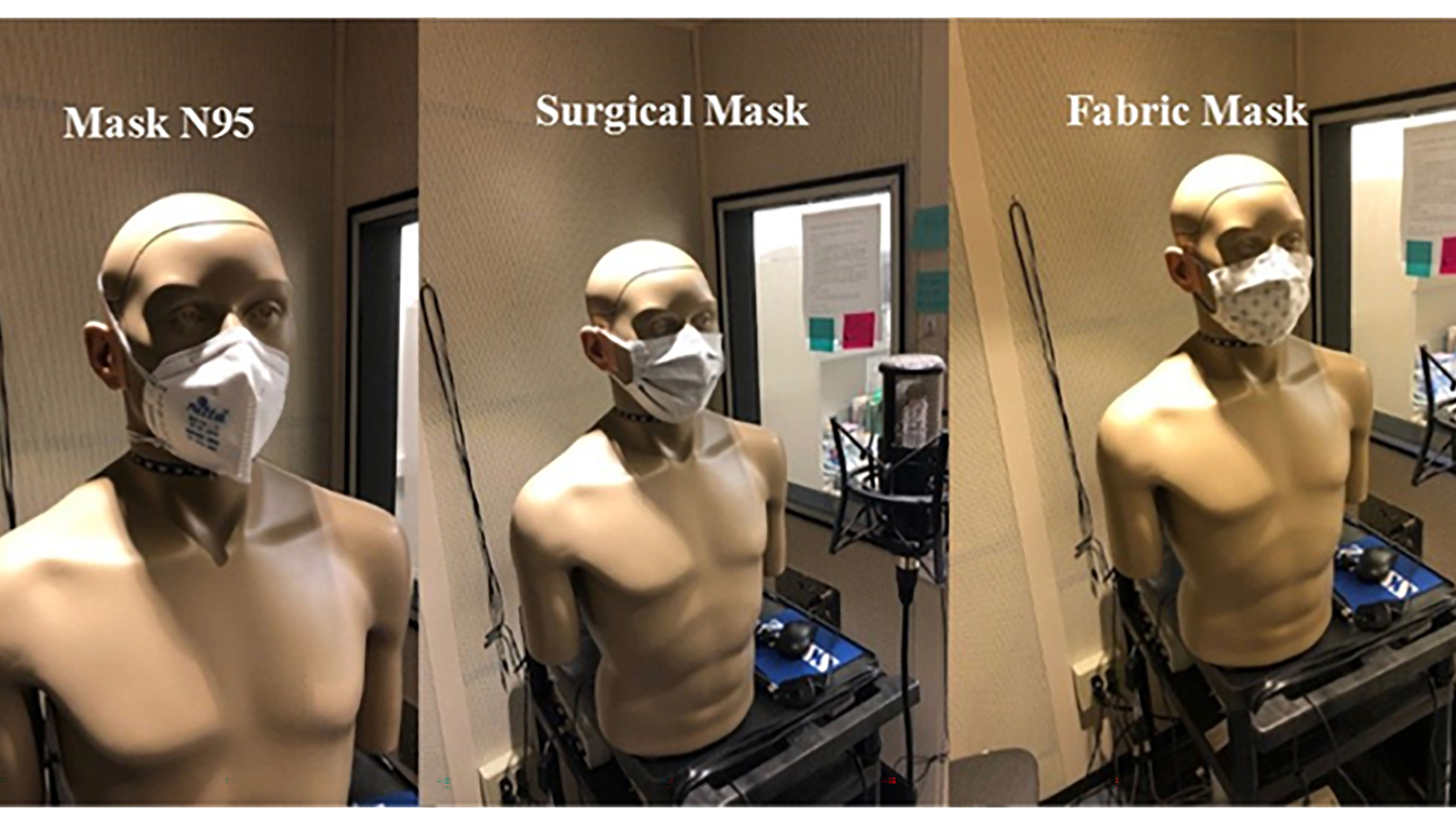A better understanding of the impacts of face masks and shields on acoustic transmission in classrooms could help optimize educational settings. During the 180th ASA Meeting, Laura and Rich Ruhala from Kennesaw State University will talk about how various types of face coverings may affect students’ understanding of their teacher. Their presentation, “Acoustical transmission of face coverings used to reduce coronavirus transmission in a classroom environment,” will take place Tuesday, June 8.
Tag: Speech Intelligibility

Face Masks Provide Additional Communication Barrier for Nonnative Speech
Though face masks are important and necessary for controlling the spread of the new coronavirus, they result in muffled speech and a loss of visual cues during communication. Sandie Keerstock, Rajka Smiljanic, and their colleagues examine how this loss of visual information impacts speech intelligibility and memory for native and nonnative speech. They will discuss these communication challenges and how to address them at the 179th ASA Meeting, Dec. 7-10

Masked Education: Which Face Coverings are Best for Student Comprehension?
With the ubiquity of masks due to the coronavirus pandemic, understanding speech has become difficult. This especially applies in classroom settings, where the presence of a mask and the acoustics of the room have an impact on students’ comprehension. Pasquale Bottalico has been studying the effects of masks on communication. He will discuss his findings on the best way to overcome hurdles in classroom auditory perception caused by facial coverings at the 179th ASA Meeting.